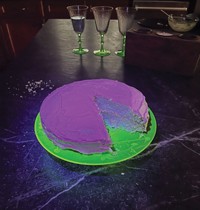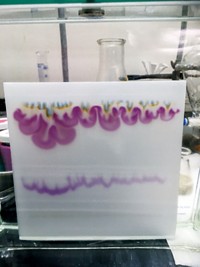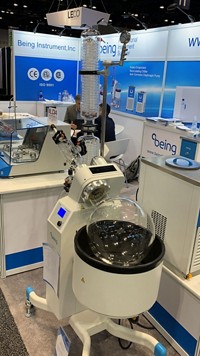Advertisement
Grab your lab coat. Let's get started
Welcome!
Welcome!
Create an account below to get 6 C&EN articles per month, receive newsletters and more - all free.
It seems this is your first time logging in online. Please enter the following information to continue.
As an ACS member you automatically get access to this site. All we need is few more details to create your reading experience.
Not you? Sign in with a different account.
Not you? Sign in with a different account.
ERROR 1
ERROR 1
ERROR 2
ERROR 2
ERROR 2
ERROR 2
ERROR 2
Password and Confirm password must match.
If you have an ACS member number, please enter it here so we can link this account to your membership. (optional)
ERROR 2
ACS values your privacy. By submitting your information, you are gaining access to C&EN and subscribing to our weekly newsletter. We use the information you provide to make your reading experience better, and we will never sell your data to third party members.
People
Scientists’ favorite DIY lab equipment, and making lab trash live on
by Linda Wang
March 7, 2020
| A version of this story appeared in
Volume 98, Issue 9
Sharing science hacks

Many scientists will go out of their way to save a few bucks, especially when it comes to improvising with makeshift lab equipment. So when Jacquelyn Gill, an associate professor of paleoecology and plant ecology at the University of Maine, asked on Twitter what everyday household items scientists use for research, she got hundreds of responses.
“When I was a student we used to use a salad strainer to centrifuge crystallization capillaries,” tweeted Tamir Gonen, a professor of biological chemistry and physiology at the University of California, Los Angeles.
Tom Rivas, a graduate student in biochemistry at the University of Colorado Boulder, could identify with that, tweeting that he uses a salad spinner to pulse down his quantitative polymerase chain reaction plates before running them.
“Nail salon lamps for photochemical reactions and cat litter buckets for base baths,” offered Lisa McElwee-White, a chemistry professor at the University of Florida. “And an aquarium pump in a styrofoam beer cooler full of ice water makes a great circulating chiller.” She points out that a chiller can cost a few thousand dollars, whereas a Styrofoam beer cooler can be purchased for as low as $1 from a convenience store.
Alex Speed, an assistant professor of chemistry at Dalhousie University, shared photos of an ice cream bucket and a dog food bowl that he’s used as a cooling bath.
“So many household items are useful for immunohistochemistry!” tweeted Kaitlin Fogg, an assistant professor of bioengineering at Oregon State University. “A vegetable steamer or rice cooker for antigen retrieval, aluminum foil for keeping things protected from light, and Saran Wrap for preventing the blot from drying out during imaging!”
Paleontologist Anthony J. Martin of Emory University said an empty Valentine’s Day chocolate box doubles nicely as a container to store the fossilized insect cocoons he’s studying.
And Mark Alan Hix, a PhD candidate at the Univeristy of North Texas, said that he’s used an empty Altoids mint tin to do vapor deposition tests. “I’ve gotta figure out how to turn ‘be a broke scientist’ into a line on my CV,” he quipped. “I feel like that’s a good skillset.”
New life for an old flask
One person’s lab trash may be another person’s treasure. Sarah Cady, who manages the Chemical Instrumentation Facility at Iowa State University, recently shared on Twitter a photo of an aquarium made from a 72 L round-bottom flask that had one of its three necks broken off.

“You take something that otherwise would be trash, but you can see its uniqueness and invent a way to reuse it,” she tells Newscripts.
The aquarium is the brainchild of Trond Forre, a scientific glassblower at Iowa State University and a fish aficionado. A local company gave the flask to Forre after learning that it was beyond repair for its intended use: mixing solutions for a water analysis kit.
Instead of letting the flask turn into junk, Forre decided to do something creative with it.
“I thought, ‘You know, that would be a really cool fish tank,’ ” he says.
He got to work smoothing out the neck that had been broken and attached some tubing to pump air into the tank. He placed a beaker, a two-neck round-bottom flask, and a small vacuum manifold inside the main flask. “The fish love it. They’ll actually swim in that round-bottom flask and they’ll get stuck in there for a bit. Or they’ll swim inside the beaker and sit there. It’s pretty cool.”
Cady already has plans for Forre’s next repurposing project: creating a terrarium for her office out of a giant glass carboy.
Linda Wang wrote this week’s column. Please send comments and suggestions to newscripts@acs.org.





Join the conversation
Contact the reporter
Submit a Letter to the Editor for publication
Engage with us on Twitter